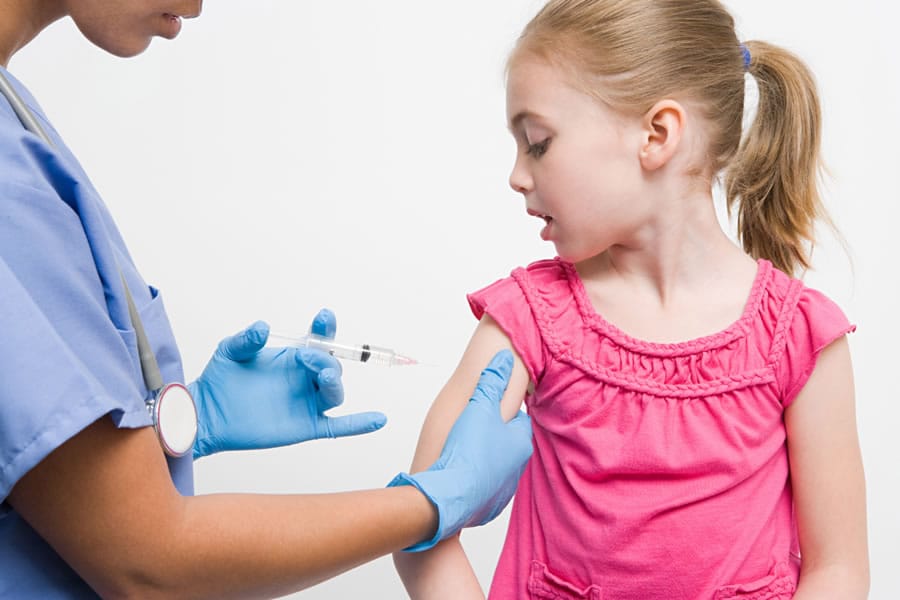
Looking at Vaccines and their Development Essay
Procedure of vaccination has experienced new birth during the past thirty years. Progress in science and business has driven the field of vaccination to the stage where vaccines are recognized as one of the key points of pharmaceutical industry growth and vital element of mankind immunization. This health invention is simple, powerful and cost-effective at the same time. It has protected billions of people all over the world from polio, smallpox and many more other hard diseases with only a few doses (Minna Stern and Markel).
According to Satcher society has the right to receive safe vaccines, but still no drug or vaccine is 100 percent without risk. Scientists together with governmental health departments of many countries are still working under reduction of the vaccine risk applying new surveillance systems, making vaccine safety researches, adopting administration policies on safe vaccines and providing educative information to parents, medical institutions and everyone else who is a potential user of a vaccine.
Satcher states the following:
Two recent examples reflect the emphasis we place on providing the safest vaccines possible. Beginning in 1996, to prevent pertussis in infants, we began use of a safer, newly-licensed vaccine. In recent years, we have switched our polio immunization strategy from primary reliance on oral polio vaccine, which very rarely causes polio (1 in 2.4 million doses), to inactivated polio vaccine which never causes polio.
However efforts to make vaccines as safe as possible still leave a chance of adverse reaction in a small number of vaccine recipients. Pursuant to Satcher there is the National Vaccine Injury Compensation Program (VICP) that provides a financial support to families suffering after the receipt of vaccine.
Some researches find a connection between almost all forms of vaccines and autism. Young parents worry about measles, mumps, and rubella (MMR) vaccine as there are a lot of Internet rumors that MMR vaccine causes communicative disorders and autism.
However the benefit of MMR immunization is incredible as those people who blame MMR vaccines are to young to remember or did not experience effect of these diseases. The most dangerous out of these three according to Jeffrey and Dennis (2007) is measles that causes complications of pneumonia and encephalitis. And as a result of vaccination, that in 99 percent decline the disease, people have forgotten horrible impact of measles, mumps, and rubella.
According to Baker and Clements British investigator Andrew Wakefield in 1997 issued and article were he described several events of autism signs developed in children following the MMR immunization. He suggested possible inflammation of the gut by these vaccines that provided intrusion of an unspecified toxic substance into the bloodstream. Thimerosal, based on mercury preservative that was used in almost all vaccines starting from 1980s is blamed to cause autism. This information began to circulate in mass media thus reducing reputation of the vaccines.
Looking back at the history of vaccines development we can see that in 1991 vaccinations were largely based in thimerosal. The amount of thimerosal was 99 times higher than recommended by Environmental Protection Agency. After parents demand starting from 2001 thimerosal was removed out of vaccines except of flu shots and some Hepatitis B vaccines.
Society knows about benefits of immunization but almost every person is afraid when it concerns children. If a child does not receive vaccine shot in time and is affected by disease the child’s organism may not fight the disease as it is not strong enough. It is well known that many children had suffered and even died from diseases that now may be avoided with the help of vaccines. These are the whooping cough, measles, polio and many others. These microorganisms still exist today but children are protected by vaccines.
Debates upon safety of vaccines are still in progress and there a lot of publications on pro and contra of immunization. The latest investigations show that there are five key points that may influence on autism appearance but not the immunization. According to Rettner these five are:
genetic – parents who has one child with autism will more likely experience the same situation with another newborn;
pesticides – resent studies show that chemical elements contained in pesticides may influence on children who has predisposing factor of autism appearance;
pharmaceuticals – children that received pharmaceuticals in the uterus have been found at higher risk of autism;
parental age – genetic mutations in organisms of elder people who become parents may affect an organism of their children, as a result causing autism;
the brain development – such parts of a human brain as the cerebral cortex and the cerebellum have been connected to autism.
From my point of view, immunization of each certain child helps to protect the health of community overall. However not every child should be vaccinated and the child’s parents must be aware of risks exposed. For example, children less than one year old must not receive measles vaccine but can easily be infected, children with leukemia are recommended to abstain from vaccination. And of course children with broken immunity should not take a vaccine shot until complete recovery. Otherwise immune system will not be available to resist the substance injected and that may lead to damages.
If parents decide not to immunize their children they should be ready for such consequences as high-risk infection, numerous visits to the doctor, sometimes hospitalization and death that are much more series problems than autism. My own recommendation for young parents is to get more information about vaccines they want to apply, visit several doctors for child examination previous to vaccination so that an average opinion could be made upon the issue. If a child has high temperature or other signs of organism disorder the child’s parents must not make a rush with immunization and should wait for better times. The child should be kept away from crowded places were infectious diseases spread and contact as less persons as possible.

